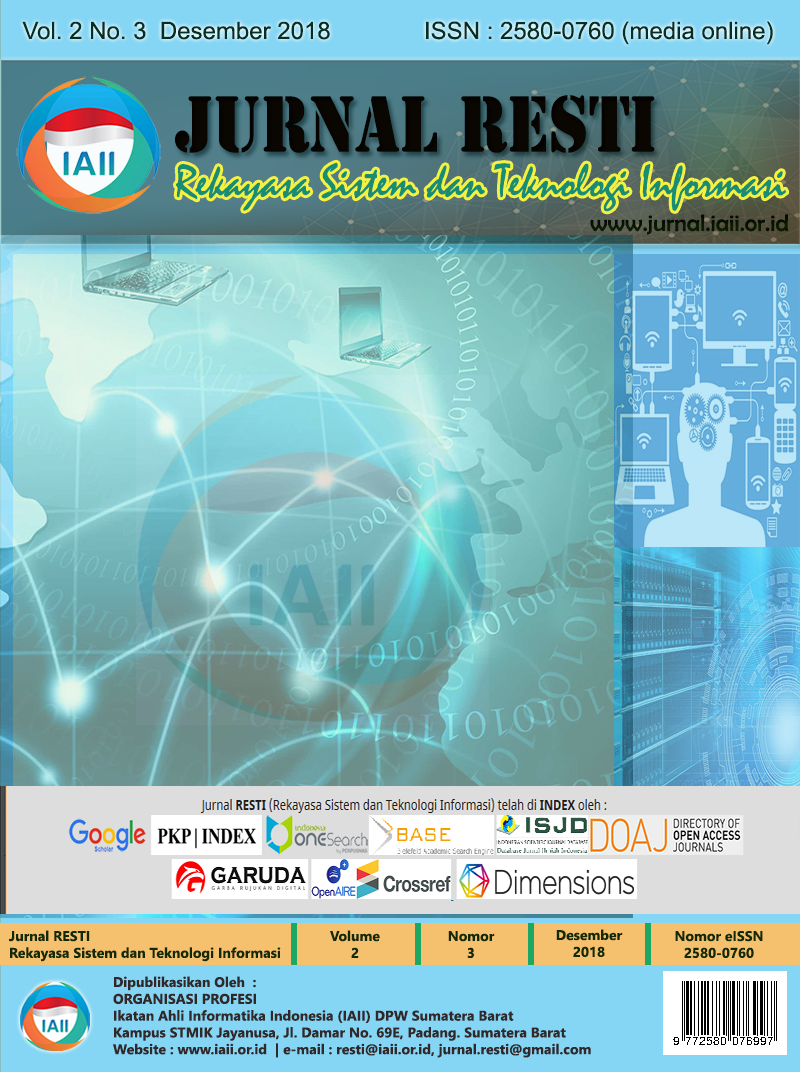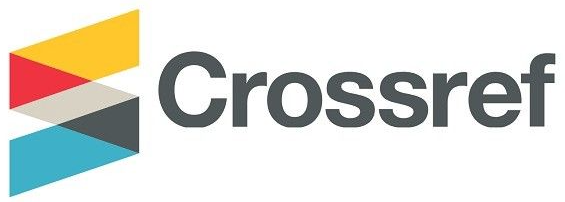Prediksi Volume Penggunaan Air PDAM Menggunakan Metode Jaringan Syaraf Tiruan Backpropagation
Abstract
As the population growth rate in Duri increases, the need for clean water also increases as needed. In Indonesia, PDAM is an institution that regulates and manages the provision of clean water for the community. So the amount of water produced and distributed should be adjusted to the demand for water. However, the problem arises in the form of waste of water at PT. PDAM Duri. Purpose of this study is to predict the amount of water consumption at PT. PDAM Duri by implementing Backpropagation Artificial Neural Network method. Variables of data taken from customer data were social, general social, household 1, household 2, household 3, commerce 1, commerce 2 and commerce 3. Data used in the prediction process was training data in 2016 and data testing in 2017. Actual amount of data at PT. PDAM Duri City 2016 until 2017 was 2.840.165 when the prediction result using artificial neural network back propagation method was 2.843.388. The number of training epochs was 4595 and the achievement of MSE (Mean Squared Error) on the test was 0,001 and the result of accuracy was 99,99900000%. Final result of this research was artificial neural network using back propagation method could predict the using of water consumption at PT. PDAM Duri for next year.
Downloads
References
[2] Kung, J., Kim, D., & Mukhopadhyay, S. (2015). A power-aware digital feedforward neural network platform with backpropagation driven approximate synapses. Proceedings of the International Symposium on Low Power Electronics and Design, 2015–Septe, 85–90. https://doi.org/10.1109/ISLPED.2015.7273495
[3] Pan, X., Lee, B., & Zhang, C. (2013). A comparison of neural network backpropagation algorithms for electricity load forecasting. In Proceedings - 2013 IEEE International Workshop on Intelligent Energy Systems, IWIES 2013 (pp. 22–27). https://doi.org/10.1109/IWIES.2013.6698556
[4] Huang, D., & Wu, Z. (2017). Forecasting outpatient visits using empirical mode decomposition coupled with backpropagation artificial neural networks optimized by particle swarm optimization. PLoS ONE, 12(2). https://doi.org/10.1371/journal.pone.0172539
[5] Hrasko, R., Pacheco, A. G. C., & Krohling, R. A. (2015). Time Series Prediction Using Restricted Boltzmann Machines and Backpropagation. Procedia Computer Science, 55, 990–999. https://doi.org/10.1016/j.procs.2015.07.104
[6] Lahmiri, S. (2014). Wavelet low- and high-frequency components as features for predicting stock prices with backpropagation neural networks. Journal of King Saud University - Computer and Information Sciences, 26(2), 218–227. https://doi.org/10.1016/j.jksuci.2013.12.001
[7] Nugraha, A. P. (2015). Aplikasi Sistem Pakar Untuk Mendiagnosa Penyakit Dalam Menggunakan Metode Forward Chaining Dan Certainty Factor Berbasis Web ( Studi Kasus : Poliklinik Pt Pos Indonesia Bandung ) Application of Expert System to Diagnose Internal Disease Using Forward Chai, 2(2), 3676–3683.
[8] Rahayu, S. (2013). Sistem pakar untuk mendiagnosa penyakit gagal ginjal dengan menggunakan metode bayes. Pelita Informatika Budi Darma, IV(3), 129–134
[9] Ihwan, A. (2013). Metode Jaringan Saraf Tiruan Propagasi Balik Untuk Estimasi Curah Hujan Bulanan di Ketapang Kalimantan Barat, 243–247.
[10] Zekson Arizona Matondang, (2013). “Jaringan Syaraf Tiruan dengan Algoritma Backpropagation untuk Penentuan Kelulusan Sidang Skripsi”. Pelita Informatika Budi Darma, 1 Agustus
[11] Abidah, S. (2013). Analisis komparasi metode tsukamoto dan sugeno dalam prediksi jumlah siswa baru. Jurnal Teknologi Informasi Dan Komunikasi, 8(2), 57–63.
[12] Simangunsong, F. R. D. B., & Nasution, S. D. (2015). Aplikasi Jaringan Saraf Tiruan Untuk Memprediksi Metode Back Propagation, 2(6), 43–47.
[13] Ujianto, Y., dan Isa, M. (2015). Perbandingan Performansi Metode Peramalan Fuzzy Time Series yang Dimodifikasi dan Jaringan Syaraf Tiruan Backpropagation (Studi Kasus: Penutupan Harga IHSG), 4(2).
[14] Dar, M. H. (2017). Penerapan Metode Backpropagation Neural Network Untuk Memprediksi Produksi Air, 12, 203–208
Copyright (c) 2018 Jurnal RESTI (Rekayasa Sistem dan Teknologi Informasi)

This work is licensed under a Creative Commons Attribution 4.0 International License.
Copyright in each article belongs to the author
- The author acknowledges that the RESTI Journal (System Engineering and Information Technology) is the first publisher to publish with a license Creative Commons Attribution 4.0 International License.
- Authors can enter writing separately, arrange the non-exclusive distribution of manuscripts that have been published in this journal into other versions (eg sent to the author's institutional repository, publication in a book, etc.), by acknowledging that the manuscript has been published for the first time in the RESTI (Rekayasa Sistem dan Teknologi Informasi) journal ;







